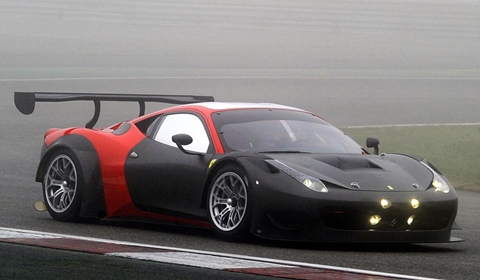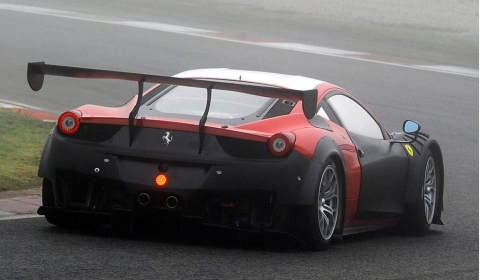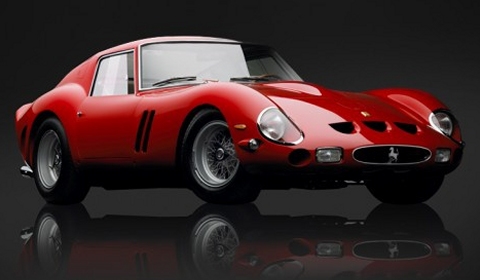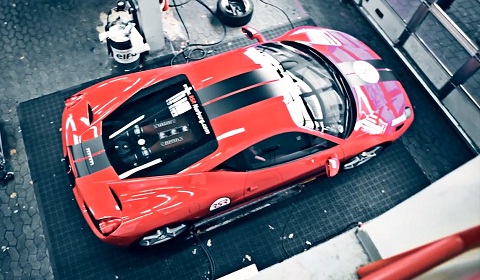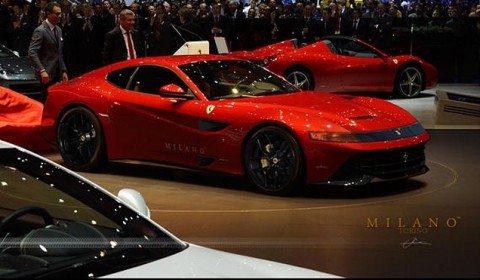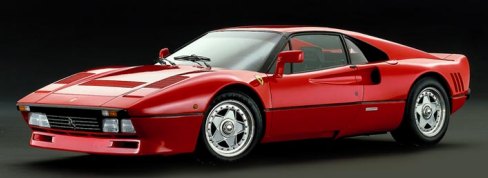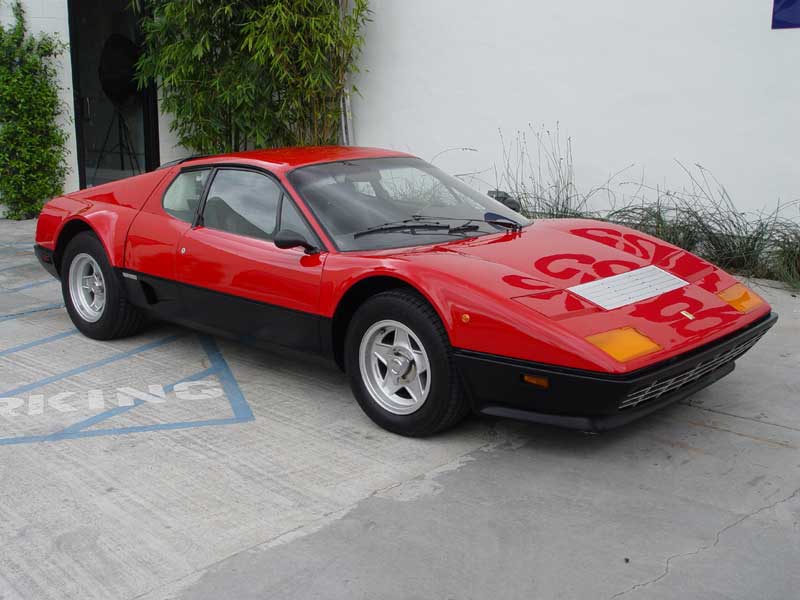Goodwood Revival

In the '30s, Germany decided to warn of its impending world dominance in the form of motor racing. It took the rest of the world years to catch up. What Panzers were to British tanks at the start of World War II, Silver Arrows were to the
ERA racers that were their contemporaries. This fact was driven home in 1938 and 1939, when Auto Union Silver Arrows driven by co-legends Bernd Rosemeyer and Tazio Nuvolari, respectively, trounced their British compatriots on their home soil at the Donington Grand Prix.



After a proper warming up, not to mention a parade of beautiful British brolly girls (seen above), the Silver Arrows took to the track. And so my two-day entrenchment into the glory days of motorsport had officially begun.
I can't speak from experience, as I hadn't quite gotten around to being born just yet, but I'm positive that no loosely structured set of words can capture the true essence of what it was like to experience life in the post-war 1940s, '50s and '60s. So I'm not really going to try. The phrase "You had to be there" pretty much sums up my take. But if there's any way to truly imagine yourself living in the past, perhaps it is at the yearly Goodwood Revival in England.
Consider: Where else will you witness a British Lancaster bomber flanked by a pair of Spitfire fighters circling overhead (below left) while watching a historic race track play host to such notable cars as the
Jaguar C- and D-Type,
Ferrari 250 GTO (as seen below) and
Shelby Cobra? The answer is nowhere, as there are only two airworthy Lancasters left of the more than 7,300 produced; the rest were shot down by Axis forces.



Did we mention the presence of Jacky Ickx, Dan Gurney (the event's guest of honor, seen above waving his hat), Sir Jackie Stewart, John Surtees and Sir Stirling Moss? Incidentally, it was at Goodwood in 1962 that Stirling's career ended after an accident, and it was while testing at Goodwood in 1970 that Bruce
McLaren, founder of the racing outfit that still bears his name, lost his life.
The annals of motorsport history, in other words, are filled with entries of the Goodwood Circuit, up until the British Automobile Racing Club organized the track's last race on July 2, 1966. No more fitting a location exists for a gathering of such epically vintage proportions.





And we were there for this year's festivities. It was as if we'd died and gone to superannuate heaven. And if that's the case, we were greeted not by Saint Peter at the Pearly Gates, but
Carroll Shelby himself, bickering for superiority with one
Enzo Ferrari.
Speaking of longtime, hard-fought rivalries (Ol' Shel finally and famously got the best of Enzo in 1965, winning the World Sportscar Championship, and in 1966, providing support for Ford's historic win at Le Mans), is there anything but the passage of time that could put machinery from the United States, Great Britain, France, Germany and Italy on the same track at the same time with nary a concern for nationalism? Well, at least not too much nationalism... it's clear that showgoers have a special place in their hearts for classic British iron, and really, there's nothing wrong with that. We drew great pleasure watching Martin Brundle and Adrian Newey – Design Chief at
Red Bull Racing and owner/driver of a Lightweight Jaguar E-Type racer – chase down a flock of Ferrari GTOs on their way to winning the hour-long RAC TT Celebration trophy after spinning out on the first lap and retaking the track in last place.



It's not all about being British, though. Witness the Shelby Cup (above), run for the first time in 2012, which pitted a contingent of AC and
Shelby Cobra classics against one another in a 45-minute battle. The ground rumbled as American V8 engines took over where typically high-strung and small-displacement British and Italian V12s and inline sixes left off, and we have no doubt that future Revivals will carry on this new tradition. We also know Daniella Ellerbrock will want her
Cobra Daytona Coupe to have another crack at victory after obliterating most of the field for the first half of the Cup before retiring in an uncharacteristic cloud of blue smoke.
Surely you've noticed by now that we've yet to mention a single automotive conveyance designed, engineered and assembled later than 1966, the year of Goodwood's last officially recognized race. Now would be a good time to mention that the ragamuffin collection of spectators, of which we were a part, descended upon the Revival in a flock of blue and white
Subaru BRZ coupes. Sure, showing up in a brand-new and highly desirable sports car may not be as cool as making an entrance in a vintage
Morgan, but our trusty BRZs got us to Goodwood with equal doses of style, performance, comfort and, yes, reliability. Score one for modern technology.



If you, too, plan to head to the Goodwood Revival – and you really should; all red-blooded automotive enthusiasts should have this event on their notary-certified bucket lists – it's best to consider your wardrobe. It would be an absolute travesty to enter the Lord March's supremely detailed retro extravaganza wearing a brand-new pair of sneakers. Consider dress slacks plus a shirt and tie to be the bare minimum if you don't want to stand out like a sore thumb. And trust us, you don't.
In any case, what fun is the bare minimum? The various pages of Goodwood's official place on the Web are littered with images of the best-dressed attendees of the Revival year after year, and are a great place to research your meticulously planned set of threads. If you can't stomach a jacket, perhaps you could consider attending as a Mod (extra points for making the trek on a Lambretta) or Rocker (on a vintage BSA, we suggest). You'll see men dressed to the nines in full military uniforms, vintage racing and mechanics suits, tweed up the yin yang and hats. Lots and lots of hats. Women kit themselves out with any number of too-cute-for-words polka-dot dresses, complete with bright red lipstick, naturally, along with mini dresses and skirts with seamed nylon stockings. We suggest you take a stroll through our high-res image gallery for an accurate take on fashion at the Revival.



It's difficult to sum up my feelings when the time finally came to leave Goodwood for good. I had just finished watching Julian Majzub pilot a Sadler-Chevrolet Mk3 to victory over such worthy contenders as a Lister-Chevrolet, two Lister-Jaguars, a pack of Jaguar D-Types and a pair of breathtaking Maserati Birdcages. Our hosts from Subaru rounded us up for a group shot (that's me smack dab in the center in the double-breasted three-quarter-length trench, newsboy cap and leather wing tips) with the track as the backdrop. I smiled for the cameras and said my goodbyes before proceeding to walk as slowly as possible through the paddock. Time to float back home aboard the ark on my river of rainbows.
source: autoblog
By Jeremy Korzeniewski
http://www.sfmotorsports.com
